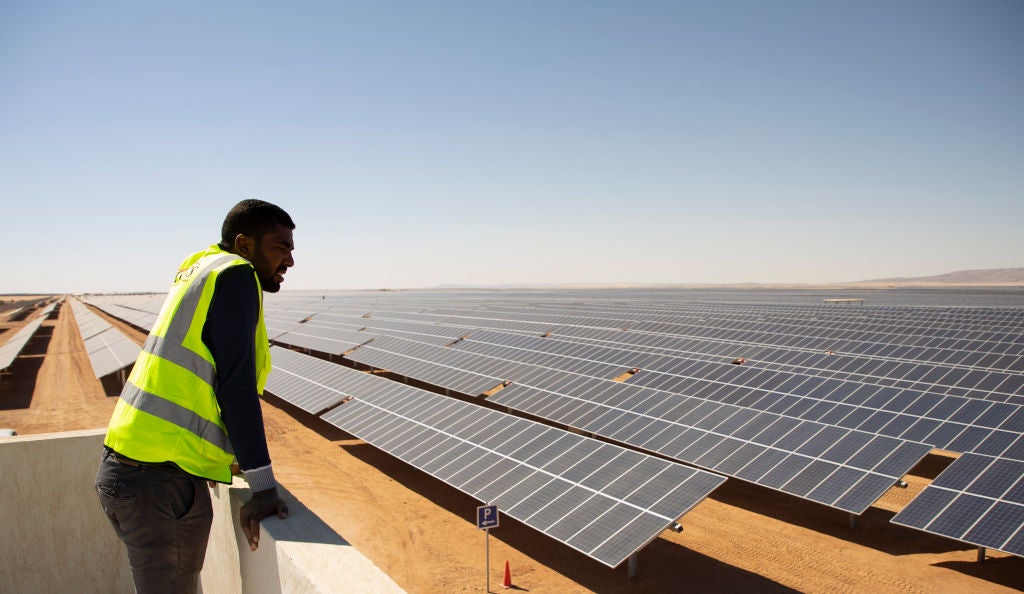The roll-out of solar photovoltaic (PV) panels is a major driving force behind the global energy transition. In 2021, some 152GW of new solar PV capacity was added worldwide – around 50% more than the annual deployment figure for wind that year. Even with Covid-19, surging commodity prices and supply chain issues, this figure is significantly up on the 138GW of solar capacity added in 2020, or the 105GW added in 2019, shows data from GlobalData, Energy Monitor’s parent company.

Africa should be well poised to take advantage of solar power. Its largely hot and sunny climate provides perfect conditions for the technology, while solar’s low capital cost should be attractive for countries with less-developed economies.

Discover B2B Marketing That Performs
Combine business intelligence and editorial excellence to reach engaged professionals across 36 leading media platforms.
Nevertheless, data from the International Energy Agency (IEA) shows that the solar industry is struggling in Africa. Unlike the rest of the world, solar PV installations fell sharply in Africa in 2020, and in 2021 they remained below their pre-pandemic level, shows data from the IEA’s Africa Energy Outlook.
The IEA attributes Africa’s sluggish growth in renewables partly to the fact that many of the continent’s energy companies are in “precarious financial health” as a result of “poor governance, underinvestment and low cost recovery”. Companies lack liquidity, which has severely limited their “ability to maintain assets and invest in new ones, leading to poor operational performance, higher costs and lower profitability”. Covid-19 has only exacerbated these problems.
There are other reasons why investors may be more reluctant to invest in renewables than in fossil fuels in Africa. Renewables projects require high upfront capital investment, followed by long-term renewable power purchase contracts that can be more complicated to negotiate in immature or more volatile markets.
Upstream oil and gas exploration traditionally offered investors the possibility of double-digit returns, in contrast to the low profit margins offered by renewables projects. Low margins mean investors want access to cheap capital, which can be hard to come by in developing markets that big international finance organisations perceive as risky.

US Tariffs are shifting - will you react or anticipate?
Don’t let policy changes catch you off guard. Stay proactive with real-time data and expert analysis.
By GlobalDataInvestment data reflects these issues. Just $44 will be spent per capita on clean energy in emerging markets and developing economies in 2022, compared with $525 in advanced economies, according to the IEA’s latest World Investment Outlook. Data from the World Bank shows private infrastructure investment in low and middle-income countries totalled $76.2bn in 2021 – an increase of 49% on 2020 but 12% lower than the previous five-year average, and less than half the figure recorded in 2012.
Six hundred million people still lack access to electricity in Africa today, shows data from the Mo Ibrahim Foundation. To fill the electricity access gap, off-grid diesel generation is booming across the African continent. Some 17 countries have more off-grid diesel generator capacity than on-grid power generation capacity, shows data from Wood Mackenzie, a global energy consultancy.
It is not all bad news, however. Progress is being made on solar in Africa, even if it is slow. In sub‐Saharan Africa (excluding South Africa), 13 countries now have more than 50MW of solar PV capacity installed, according to the IEA’s Africa Energy Outlook. Five years ago, only Namibia and Senegal had reached this level.
Several new utility-scale solar parks are being built across the continent, shows data from GlobalData. These include two massive 1GW plants in Ghana and the Democratic Republic of Congo, both of which are due to be completed by the end of 2023.





